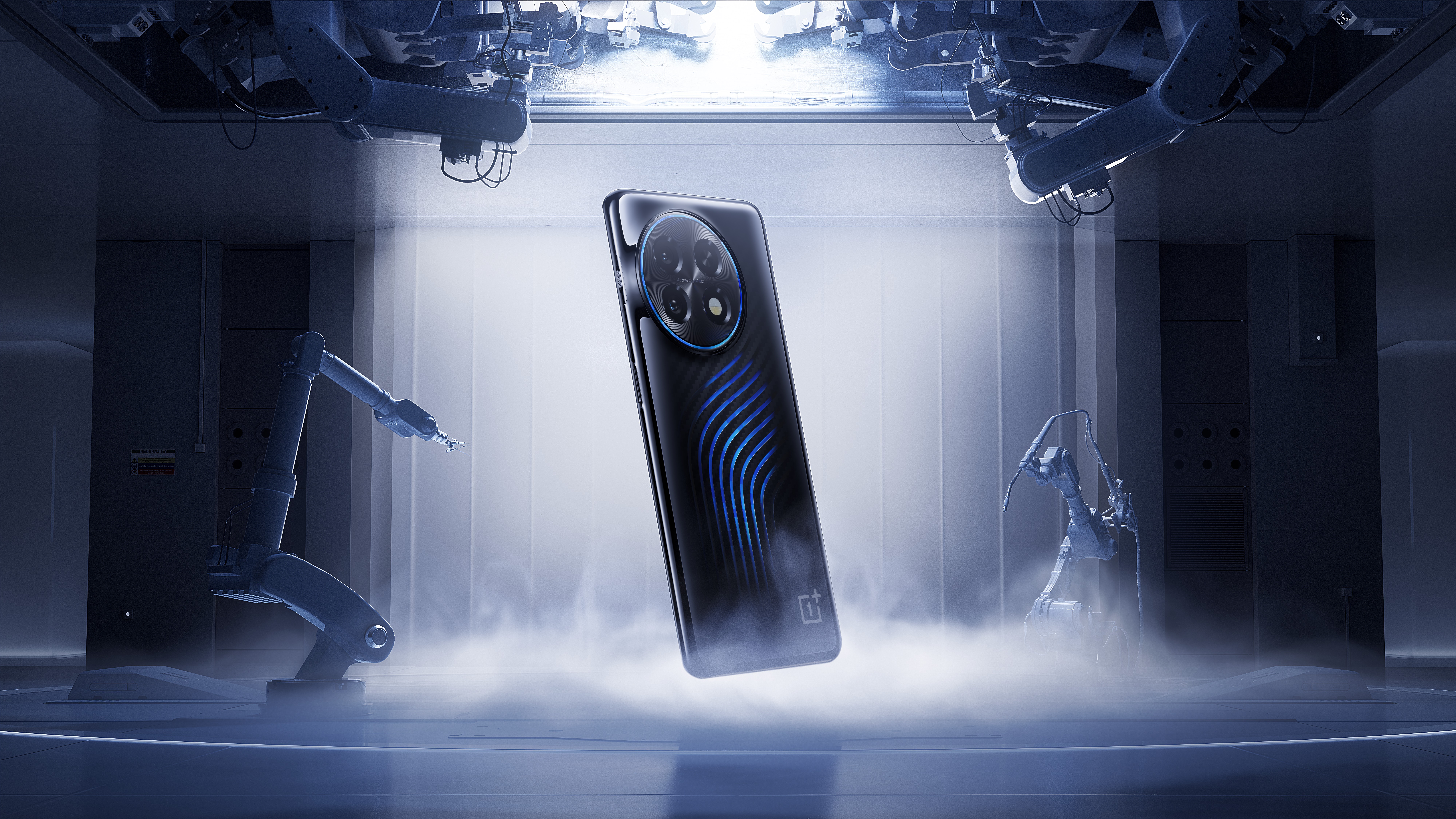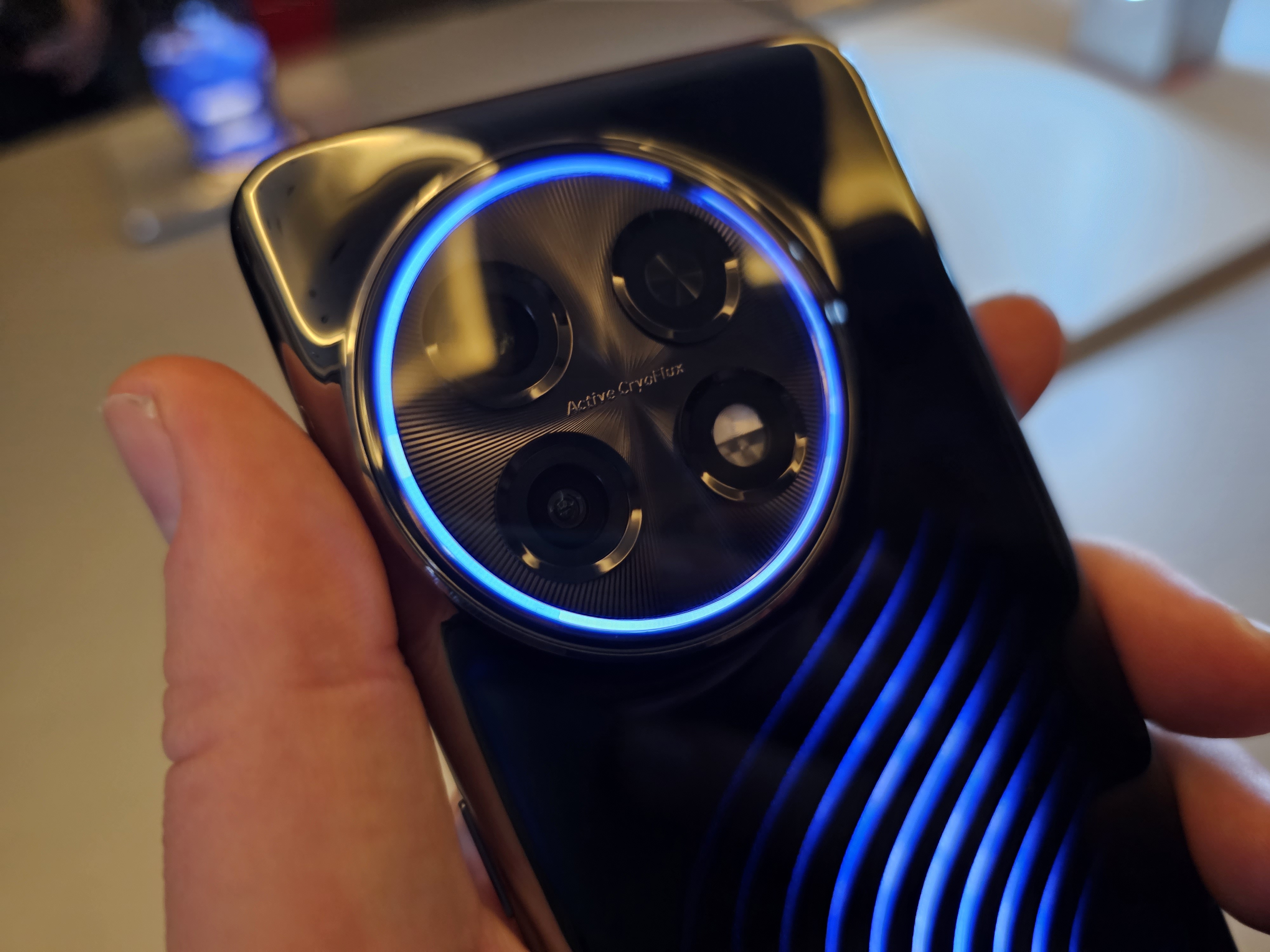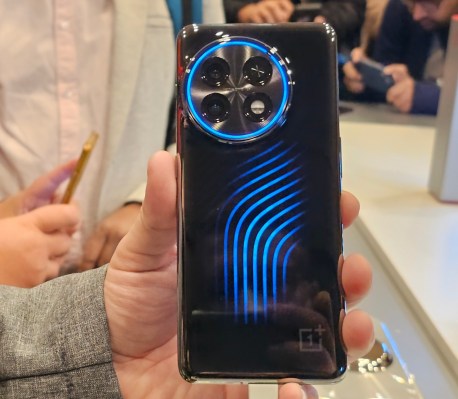The days of a cautious OnePlus release cycle appear to be behind us. In January, the Oppo-owned mobile brand unveiled its new flagship, the OnePlus 11. Earlier this month, the 11R arrived, focused on the growing Indian smartphone market. These days, the company also offers last year’s 10T and 10 Pro, three budget Nord devices, five earbuds and a tablet. A new mechanical keyboard is on the way, along with some rumored foldables.
As a change of pace, the company showcased a product this week at MWC that will never see the light of day — or at least not in its current form. As the name implies, the OnePlus 11 Concept is effectively a remix of the company’s current flagship. The key differentiators, however, point to a company hoping to get more serious about mobile gaming. The gaming phone market has been something of a mixed bag, putting it mildly, and there’s no clear indication that it will ever release such a device.
A more likely approach involves generational advances that make more serious gaming more plausible on the small screen. “We will make a lot of efforts in research and design of the technology,” OnePlus President and COO Kinder Liu told TechCrunch through a translator. “But as for the commercial availability of these technologies, we will further analyze the market and the technology’s maturity.”

Image Credits: OnePlus
Liu explains that gauging consumer interest is one of the “multiple reasons” OnePlus went the automaker route with the unveiling of a liquid cooled handset. “Also, we want to encourage continuous innovation inside our company,” he adds.
OnePlus calls the new technology “Active CryoFlux.” A 0.2 square centimeter piezoelectric ceramic micropump moves the coolant up and down a pipeline near the rear of the device and around the massive camera array. The rear of the device is covered in a transparent material, showcasing the process as a kind of light show. It’s a cool effect, and one that invariably shares comparisons to Phone (1), released by OnePlus co-founder Carl Pei’s Nothing last year.
Given the recent stagnation of broader smartphone innovation, it’s probably inevitable that manufacturers are tweaking product design in new ways. Smartphone sales have slowed pretty much across the board, as well, leaving manufacturers looking for new avenues to jumpstart sales.
“A lot of young people like playing games,” says Liu. “Gaming plays an important role in their digital life, and in the future, we will continuously improve their gaming experience. Currently, we definitely engage with our users about gaming development. We are talking about how to improve the gaming experience, and in the future, we believe we will have more time to talk to them.”

Image Credits: OnePlus
Those conversations are a reference, in part, to the company’s longstanding engagement with its user base. Community was a major factor in OnePlus’ growth from the outset, but many consumers have feared that being rolled into Chinese mobile giant Oppo has caused it to drift from that initial focus. A prime example are the original plans to merge OnePlus’ OxygenOS with Oppo’s Color OS. The company abandoned the move a year ago, following user backlash.
“I think one thing can be improved,” says Liu, “and that’s we need to have better communication with the outside world.”
Is gaming the next frontier for device makers now that the initial 5G adoption bump has long since died out? Companies like ASUS, Nubia and Xiaomi are banking on it with the release of devices that center that experience. Giants like Samsung and Apple, on the other hand, seem content to simply make gaming more accessible on their flagship devices. OnePlus seems more likely to follow the latter path, but the phone maker has certainly surprised me before.

